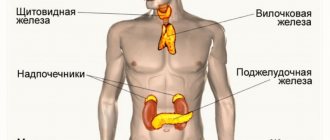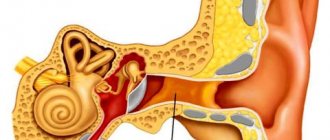Surgery is a field of medicine that uses surgical techniques to treat injuries and diseases. Generally, a procedure is considered surgical when it involves cutting the patient's tissue or suturing a pre-existing wound.
All forms of surgery are considered invasive procedures. So-called “non-invasive surgery” usually refers to an excision that does not physically penetrate the patient's organs/tissues (eg, laser corneal ablation). This term is also used to refer to radiosurgical procedures (irradiation of the tumor).
Surgeons also thoroughly study desmurgy (a branch of medicine about applying various fixing bandages), asepsis and antiseptics (a branch of medicine about methods of combating microbes). The above operations and manipulations are included in the training of any surgeon. This is necessary to provide qualified assistance in emergency situations.
Surgery profiles
What are the specializations of surgeons:
Abdominal surgery. Abdominal surgery is the oldest branch of medicine, aimed at the surgical treatment of diseases and injuries of the abdominal organs and its walls. Our medical center uses modern surgical techniques and methods for managing patients in the preoperative and rehabilitation period. This achieves high efficiency of manipulations, accelerated restoration of the body’s performance, and reduces the risk of developing postoperative complications.
Thoracic surgery. Thoracic surgery is a branch of surgery that deals with the surgical treatment of the lungs, mediastinum, pleura and chest wall. One of the main methods used in thoracic surgery is thoracotomy, an operation to open the chest. But in modern medicine, minimally invasive methods of performing surgeries, including those on the chest organs, such as tarocascopy, are becoming increasingly important.
Neurosurgery. Neurosurgery is a relatively new, dynamically developing branch of medicine. Its tasks are diagnosis and treatment (including surgery) of various diseases, damage to the central and peripheral nervous system, and their consequences.
Cardiac surgery. Cardiac surgery (otherwise known as cardiothoracic surgery) belongs to the field of cardiology and surgery and today is considered one of the most effective methods of treating coronary heart disease, which helps prevent the development of myocardial infarction.
Plastic surgery. Plastic surgery is a branch of surgery that deals with surgical interventions aimed at eliminating deformities and defects of any organ, tissue or surface of the human body. Plastic surgeries can be divided into two main types - reconstructive and aesthetic.
Maxillofacial Surgery. Oral and maxillofacial surgery is a medical science that combines knowledge from surgery and dentistry. Her interests include the face, neck and jaw. She deals with problems of inflammatory, traumatic, benign and malignant nature, congenital and acquired defects developing in these areas.
Purulent surgery. Purulent surgery is a branch of surgery that studies the treatment and prevention of diseases with purulent surgical infection and soft tissue abscesses. The concept of “purulent surgery” is a collective term that includes the treatment of diseases and complications that occur with the participation of pathogenic microorganisms and require surgical intervention. The addition of an infection can complicate the course of a wide range of diseases and surgical operations.
Transplantology. Transplantation refers to the transplantation of tissue or an organ within an organism or from one organism to another. The surgical operation ensures the removal of the graft and its transplantation, ensuring the functioning of the latter.
Traumatology. Traumatology is a branch of medicine that studies the various effects of a traumatic nature on the body, the consequences of these effects and methods of their treatment. Surgical methods include secondary and primary surgical treatment of the wound, metal osteosynthesis, intraosseous, on the bone and through devices.
Urology. Urology (from the Greek “uros” - “urine” and “logos” - “science”), a branch of medicine that studies urological diseases of the urinary organs, including surgical kidney diseases, and diseases of the male reproductive system. Surgical urology includes both minimally invasive surgical interventions, for example, operations on the male genital organs, and complex, often abdominal, operations.
Ophthalmology. Ophthalmic surgery is a surgical procedure that is performed on any part of the eye.
Gynecology. Gynecologic surgery is a term used to describe any type of surgical procedure that involves the female reproductive system.
Oncology. Oncosurgery (or, otherwise, operative oncology, oncological surgery) is a branch of medicine that arose at the intersection of oncology and surgery and studies the possibilities of using operative, surgical methods in the treatment of oncological diseases (that is, benign and malignant neoplasms).
Orthopedics. Orthopedic surgery (or orthopedics) is a branch of surgery that deals with the surgical treatment of injuries to the muscular and skeletal system - bones, joints and ligaments.
ENT surgery. ENT surgery - a huge amount is carried out to correct the nasal septum, eliminate congenital and acquired pathologies of the ENT organs.
Surgery
The main distinguishing method of treatment is surgery.
Surgery involves damaging the integrity of the skin to remove, change or correct a pathological process in the body. Surgery is a medical intervention that is carried out using physical or mechanical impact on organs and tissues. Surgical operations are carried out using special instruments and equipment to maintain the vital functions of the body.
Surgery divides operations into bloody and bloodless. With the first treatment method, penetration into internal organs or skin occurs through incisions or punctures. Bloodless surgical interventions occur directly without opening the organ cavity. The most commonly used surgical methods include pinching off biomaterial, removal of polyps, laparoscopic operations and endoscopy.
Surgical interventions are carried out in the surgical department of the Federal State Budgetary Institution "National Medical Research Center of Radiology" of the Ministry of Health of Russia in specially equipped operating rooms. The surgery department may have several teams of surgeons to rotate workers during major operations.
What are the operations by deadlines?
Surgery divides operations according to the timing of their implementation into 3 types:
Emergency (urgent). Such operations are carried out immediately after the patient’s admission to the hospital department. The time to prepare for the operation is minimal, every action of the doctor is aimed at saving lives.
Urgent. Such operations are performed urgently, but usually require several hours to prepare the operating room and make an accurate diagnosis.
Planned. The operation is proceeding as planned and on time. The duration of such an operation can stretch for several weeks, which allows you to confirm the diagnosis and pass all possible tests.
Surgery department
The surgical department at the Federal State Budgetary Institution "National Medical Research Center of Radiology" of the Ministry of Health of Russia is intended to find patients in the preoperative and postoperative period. The placement of patients in wards depends on the condition of the patients and their stage of treatment.
Our surgical department usually includes: an operating unit, a dressing room, a treatment room, hospital wards, a food unit, toilets, sanitary rooms, a utility unit and medical staff offices.
The place where surgical operations are performed is called the operating room. It is located directly on the territory of the surgical department. Strict sterile conditions are maintained in the surgery department.
The surgery department allows for minimally invasive surgery, which eliminates the need to deploy a specialized operating unit. Also the use of laparoscopic operations, endoscopy, implantation of port systems and similar technological interventions.
Stages of the operation
Surgical treatment is a series of sequential actions, and not just a period of surgery. It all starts with the preparatory stage, during which the patient is thoroughly examined, inflammation is identified, and the functioning of some internal organs is stabilized.
The stage of administering anesthesia is a very important component, because the course of events during the operation depends on this drug. It must be correctly selected depending on the body's normal reaction to a certain type of pain reliever.
The surgical stage includes making the incision, the actual treatment and suturing.
The recovery stage implies a rehabilitation period necessary for the healing of sutures and the general adaptation of the patient.
Prospects for the profession
Saving people's lives and health, recognition and gratitude from colleagues and patients - this is the main advantage of working as a surgeon. In addition to all this, every surgeon plans and builds his career. For a specialist in this field, almost all roads in the medical field are open - from the post of chief physician in a government institution, or an employee of a private clinic, to a well-known doctor who can open his own practice.
Of course, we cannot ignore the financial side of the issue. Novice surgeons who are just taking their first steps in the profession usually earn up to 70 thousand rubles a month working in a district or regional clinic. A specialist who has years of specialized work behind him and performs operations in a prestigious private clinic can receive from 300 to 400 thousand rubles.
Large and small operations
Major and minor operations differ from each other in the duration of the procedure, as well as the severity of the surgical trauma in the patient. The concept of “minor” operations provides for such procedures that can be performed even on an outpatient basis, that is, they do not require mandatory hospitalization of the patient.
It is worth noting the fact that the idea of “minor” surgery and operations is quite conditional, since any operation refers to a known lesser or greater danger for a sick person, and this is the main feature of surgical treatment.
Preparatory activities
Any procedure requires mandatory preparation. The duration of preparatory measures depends on many factors: the urgency of the operation, the severity of the condition, the presence of complications, etc. The anesthesiologist is obliged to advise the patient about the prescribed anesthesia, and the operating surgeon is obliged to advise the patient about the upcoming surgical intervention. All nuances must be clarified and recommendations given.
Basic preoperative preparation includes the following tests and procedures:
- general urine and blood tests;
- electrocardiography;
- coagulogram (blood test for clotting).
Postoperative period
This stage begins from the completion of the operation until the patient’s complete recovery. It is divided into 3 phases:
- early (duration 3-5 days);
- 2-3 weeks before the patient is discharged from the hospital;
- until the lost functions are completely restored.
You need to know that some third-party diseases of patients that are not the cause of surgery can cause some complications after surgery. Such diseases include, for example, diabetes mellitus or allergies to certain medications.
Related posts:
- Soft tissue abscess A skin abscess is an intradermal inflammatory process caused by bacterial flora, most often...
- Cerebral aneurysm A cerebral aneurysm is an enlargement of one or more…
- Brain cyst: what it is and how to remove it A brain cyst is a benign neoplasm in the form of blisters with...
- How to remove foreign bodies (balls) from the penis Young people (according to statistics, most often under 30 years old),…









